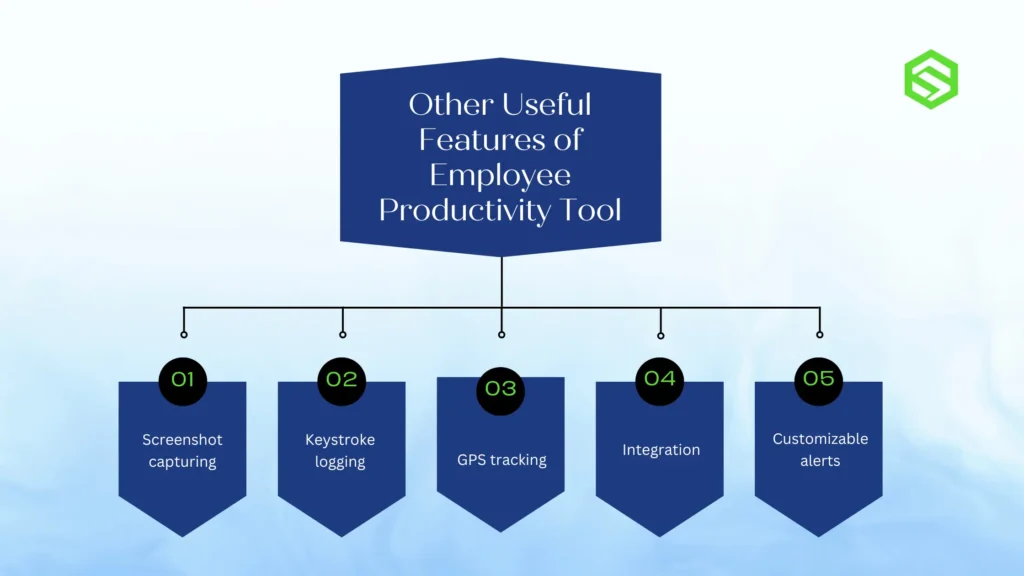
Employee Productivity Tool: Top 7 Features You Shouldn’t Miss
In a fast-moving hybrid work culture, keeping a team productive is more challenging than ever. Whether you manage a small remote team or a large enterprise, boosting employee productivity is critical for success. This is where a productivity tool steps in.
A productivity tool isn’t just a fancy app that clocks hours — it’s a smart system that helps you track employee activities, manage tasks, analyze performance, and optimize workflows. Choosing the right tool and tracking the right features can enhance work efficiency, prevent burnout, and even improve employee satisfaction.
But what exactly should you track? What features are absolutely necessary?
In this blog, we’ll walk you through the top 7 features you should never miss when using a productivity tracking tool.
Why Is Employee Productivity Assessment Important?
Before diving into the features, let’s quickly understand the importance of a productivity tool:
- Visibility: It gives you real-time insights into what your team is working on.
- Accountability: It encourages employees to stay focused and responsible.
- Efficiency: It identifies workflow bottlenecks and allows you to optimize them.
- Remote Management: It makes managing remote or hybrid teams seamless.
- Performance Analysis: It helps measure productivity trends and work patterns over time.
In short, a good productivity tool like the SAMPAT Emloyee Productivity Monitoring tool can transform the way your team operates — making your business more agile, efficient, and profitable.
Top 7 Features You Shouldn’t Miss in a Productivity Tool
Now, let’s explore the must-have features that you should always track in your productivity software:
1. Active Hours and Idle Time Tracking
One of the core functionalities of any employee productivity monitoring software is tracking active hours and idle time.
Active hours show the actual time an employee spends working productively, while idle time helps identify distractions or unnecessary delays.
By analyzing this data, we can:
- Spot productivity gaps
- Identify overworked employees
- Make data-driven decisions to improve work habits
2. App and Website Usage Monitoring
Another essential feature is monitoring application and website usage. This helps you understand whether employees are spending time on work-related platforms or getting distracted by social media or gaming sites.
Look for tools that offer detailed reports showing:
Time spent on different apps
Websites visited
Categorization of productive vs. non-productive activities
This insight is vital for improving employee focus and designing better work-from-home policies.

3. Task and Project Management Integration
Many top productivity tools, like the SAMPAT employee productivity monitoring tool, now come with built-in task management features. Tracking task progress, assigning responsibilities, and setting deadlines keep your team aligned.
Important elements include
- Task assignment and prioritization
- Status tracking (To-Do, In Progress, Completed)
- Deadline and milestone monitoring
By integrating task management, you can reduce reliance on multiple tools and centralize your operations.
4. Real-Time Activity Monitoring
Real-time activity tracking gives managers a live snapshot of what each employee is working on at any moment.
This feature is especially useful for:
- Managing remote workers
- Tracking freelancers
- Handling critical projects with tight deadlines
It builds a culture of transparency while still respecting privacy when used ethically.
5. Automated Time Tracking and Timesheets
Manual time entry is outdated and prone to errors. Automated time tracking ensures that work hours are recorded accurately without human intervention.
SAMPAT productivity monitoring tools offer:
- Automatic start/stop timers
- Pre-filled digital timesheets
- Break and overtime tracking
This not only saves time but also simplifies payroll processing and performance evaluation.
6. Productivity Reports and Analytics
Without proper productivity reports, all the tracked data is meaningless.
SAMPAT’s employee productivity monitoring software offers customizable reports that show:
- Daily/weekly/monthly productivity trends
- Top performers
- Areas needing improvement
- Department-wise or project-wise breakdowns
Data-backed insights allow you to set realistic goals and boost productivity strategically.
7. Security and Data Privacy Controls
Finally, an often overlooked but critical feature: security and privacy.
Since productivity monitoring tools collect sensitive data, strong encryption, role-based access, and privacy compliance (like GDPR) are must-haves.
Employees should also have transparency on:
- What data is collected
- How it’s used
- Their rights regarding monitoring policies
Choosing a tool that prioritizes ethical tracking builds trust with your team while protecting your company legally.
Bonus: Useful Features to Look for
Besides these 7 features, some extra functionalities that add even more value include

- Screenshot capturing (at random intervals)
- Keystroke logging (if required and legally compliant)
- GPS tracking for field teams
- Integration with Slack, Asana, Trello, etc.
- Customizable alerts and notifications
Remember: the goal is to empower your workforce, not micromanage them. Use these features wisely to create a better, more productive work environment.
Conclusion
Selecting the right productivity monitoring tool can make a world of difference for your team’s success. By focusing on active hour tracking, app usage monitoring, real-time activity tracking, and strong analytics, you can enhance efficiency without overwhelming your employees.
Always prioritize transparency and privacy while implementing monitoring practices. A smart, respectful approach will help you not only boost productivity but also build a positive workplace culture.
If you’re planning to invest in a productivity tool, make sure it covers these 7 must-have features — your future self (and your team) will thank you!



